NicaraguaMap
January The local currency unit is the Nicaraguan córdoba. The symbol for it is C$. At first, the C was written next to the $. 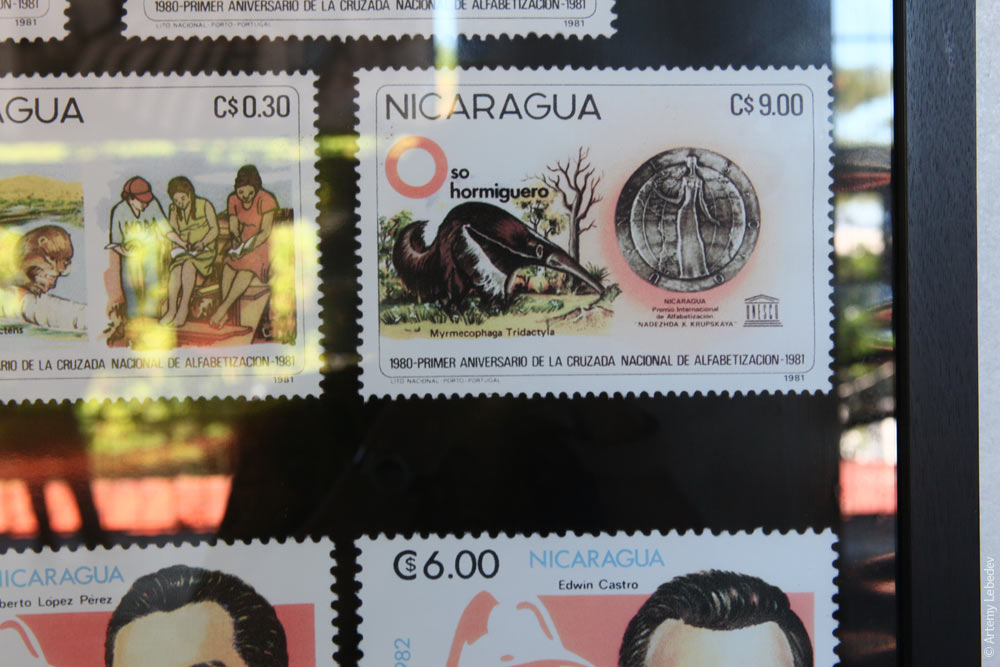 And then it swallowed it entirely. 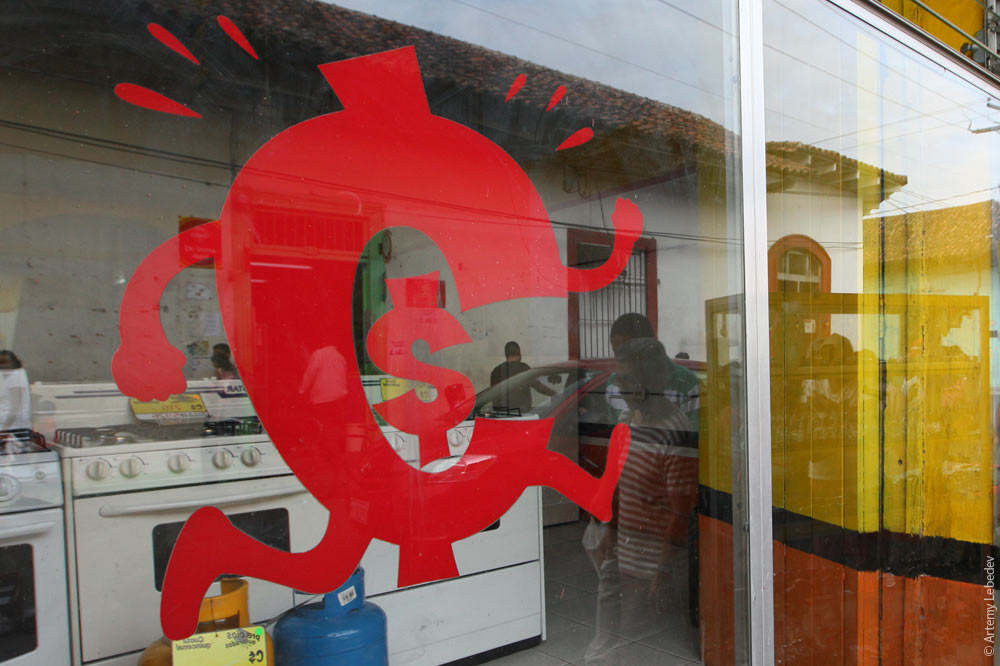 Motor vehicle inspection stickers. 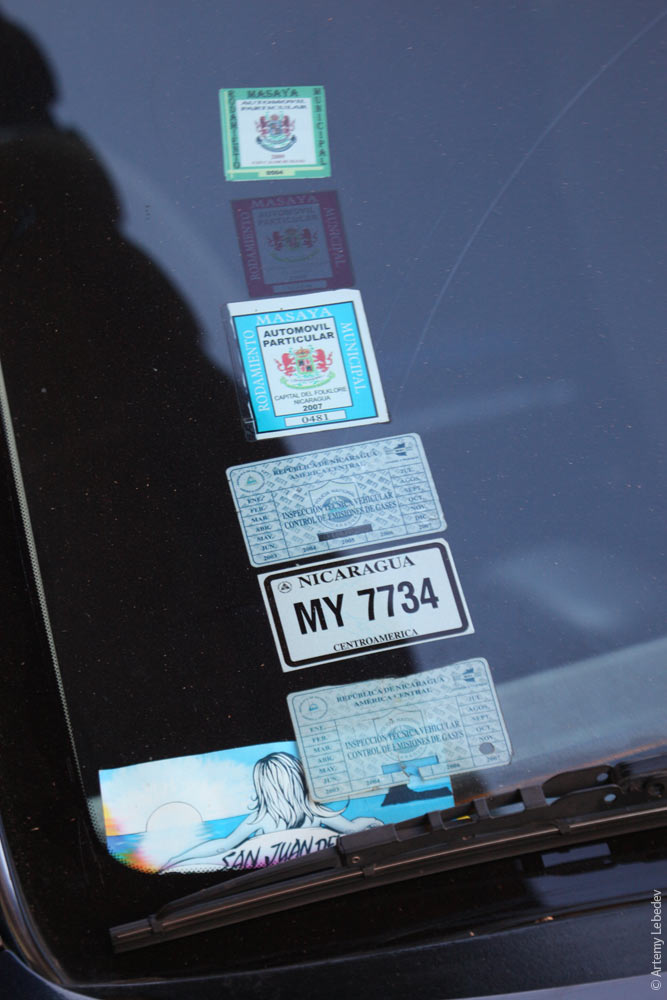 A license plate. 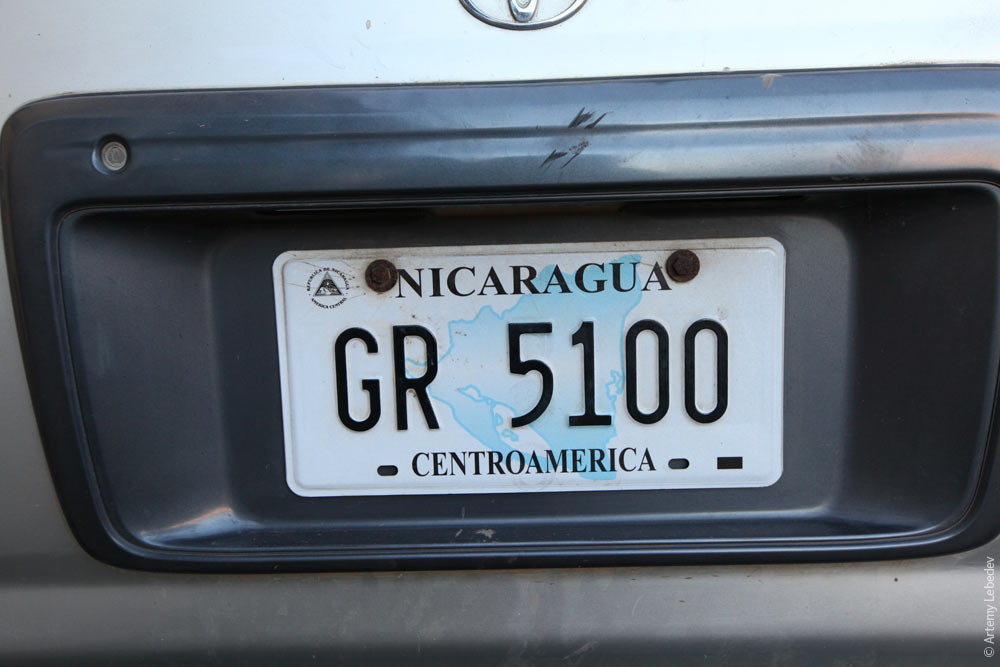 The exhaust pipe on most buses extends up to the roof level. This is a purely Nicaraguan feature: the same models of buses in neighboring countries have exhaust pipes sticking out of the usual place—at the bottom.  A lodging sign. 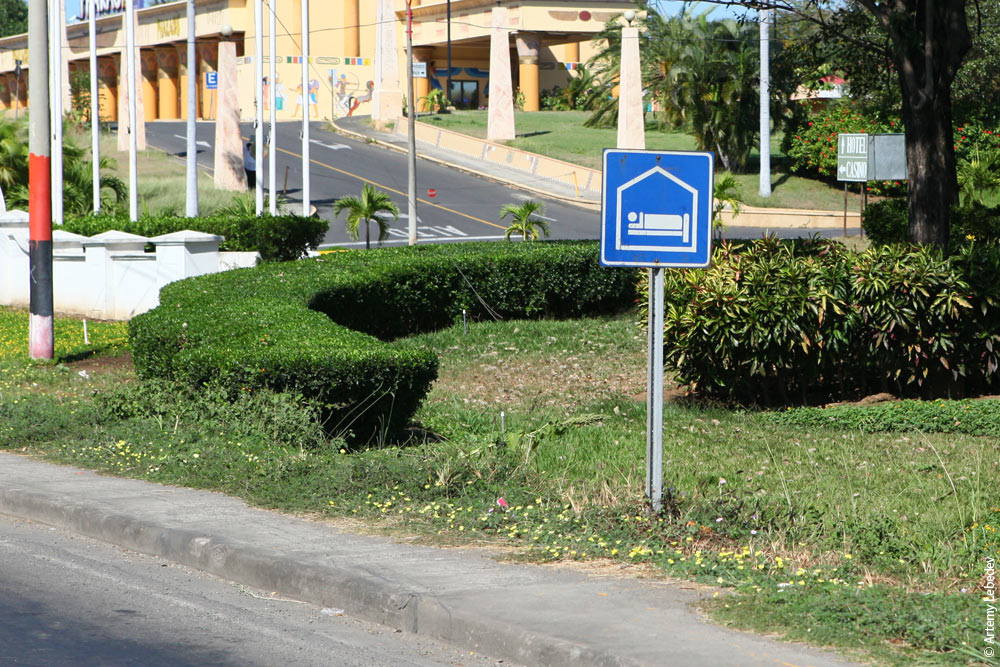 A U-turn on the highway. The sign faithfully portrays just how inconvenient it is: drivers suddenly have to slow down on a straight section of the highway in order to pass through a roundabout that has no other roads connecting to it. All because the engineers couldn’t be bothered to design smooth trajectories. 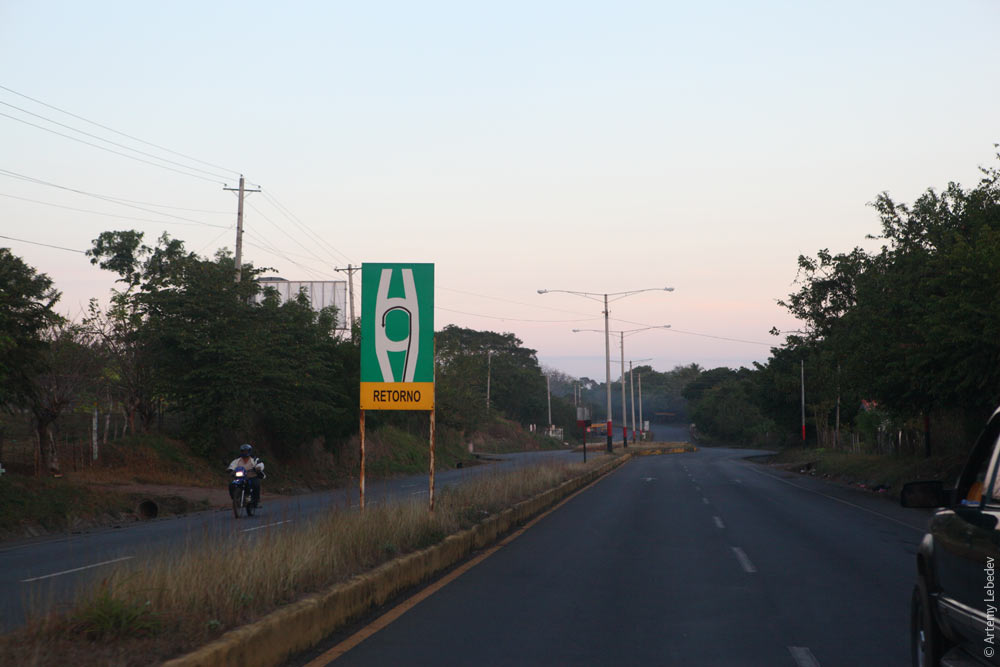 Traffic light coming up. 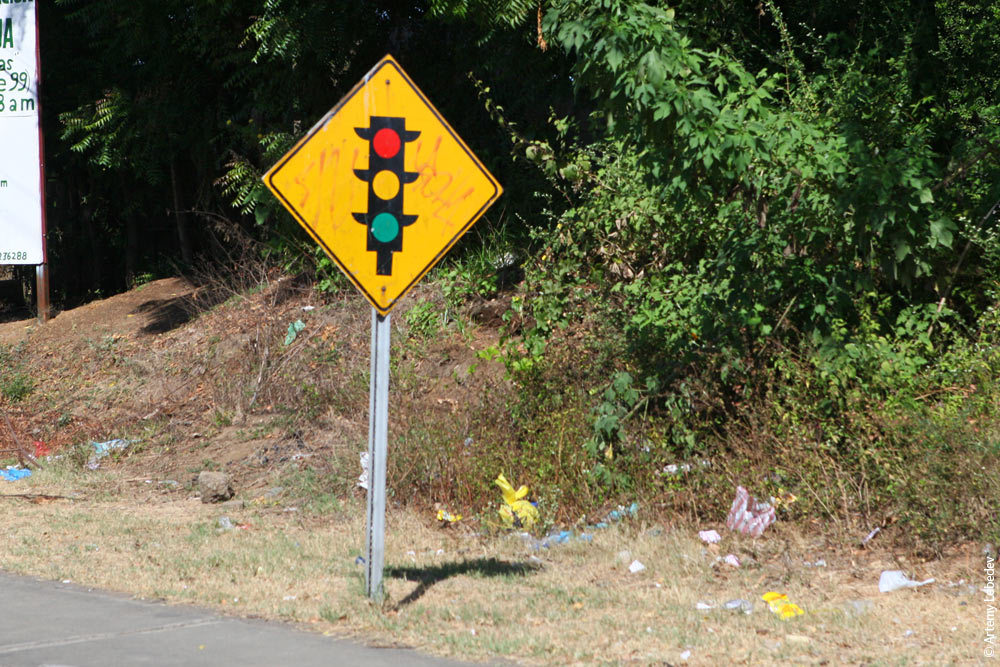 ManaguaMapA traffic light in the capital. 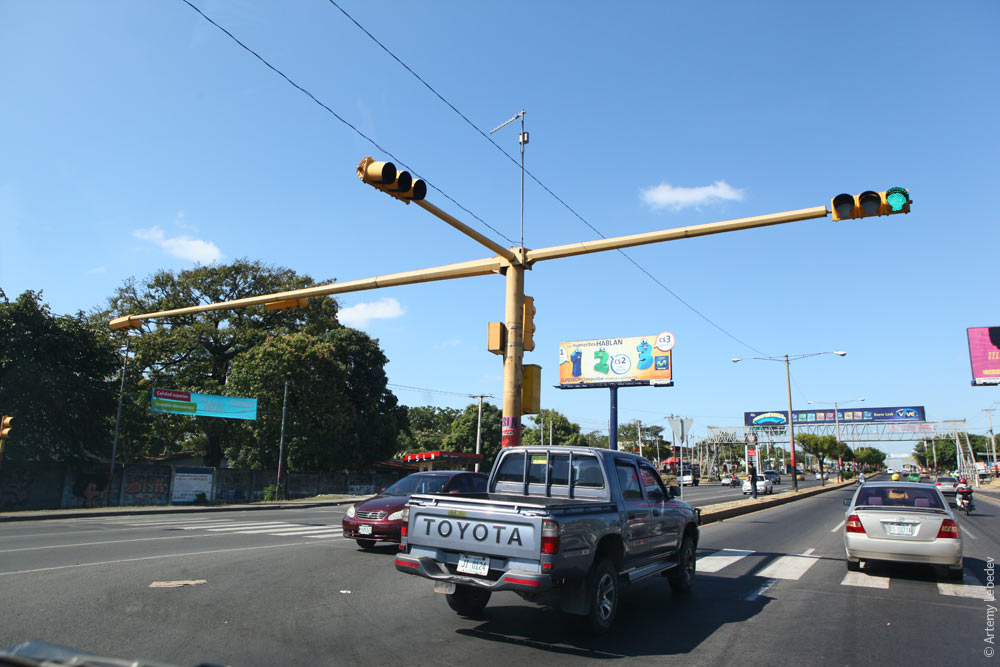 Just like in Guatemala and El Salvador, there are no standalone street poles—they grow in bunches. 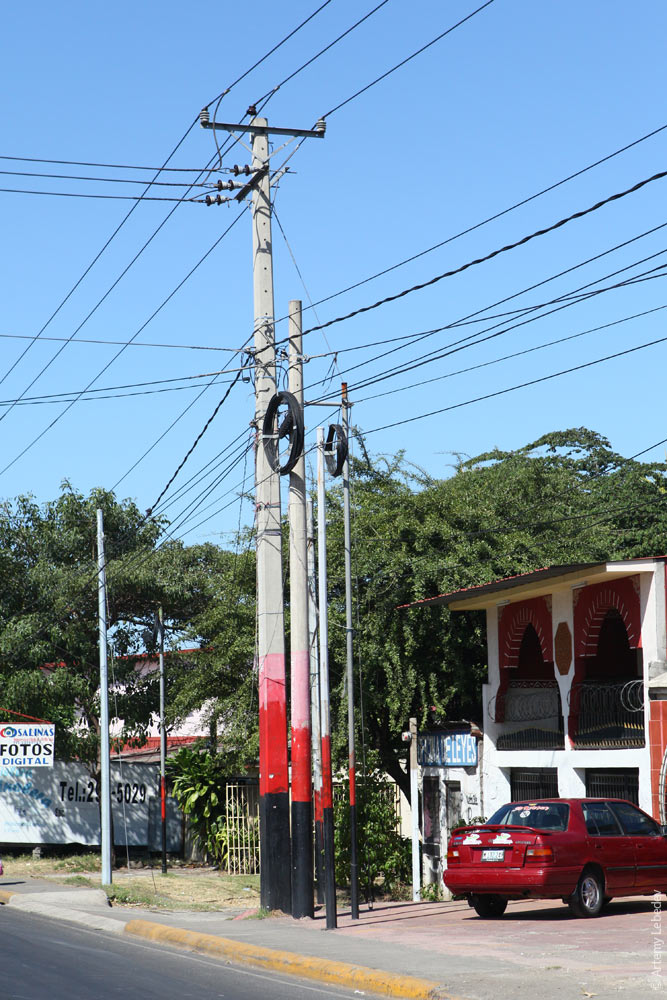 Nicaragua has had some tough luck—its capital was destroyed by an earthquake. Only a handful of buildings survived, so there isn’t much to look at. What’s also interesting is that there are no street names here. Addresses in the country all look like this: “two blocks north from the McDonald’s, then the third red house on the left” or “the south corner of the central square.” Even if there are singular cases where an avenue is named after someone, the locals remain unaware of the fact. Water is sold on the street in little plastic bags. 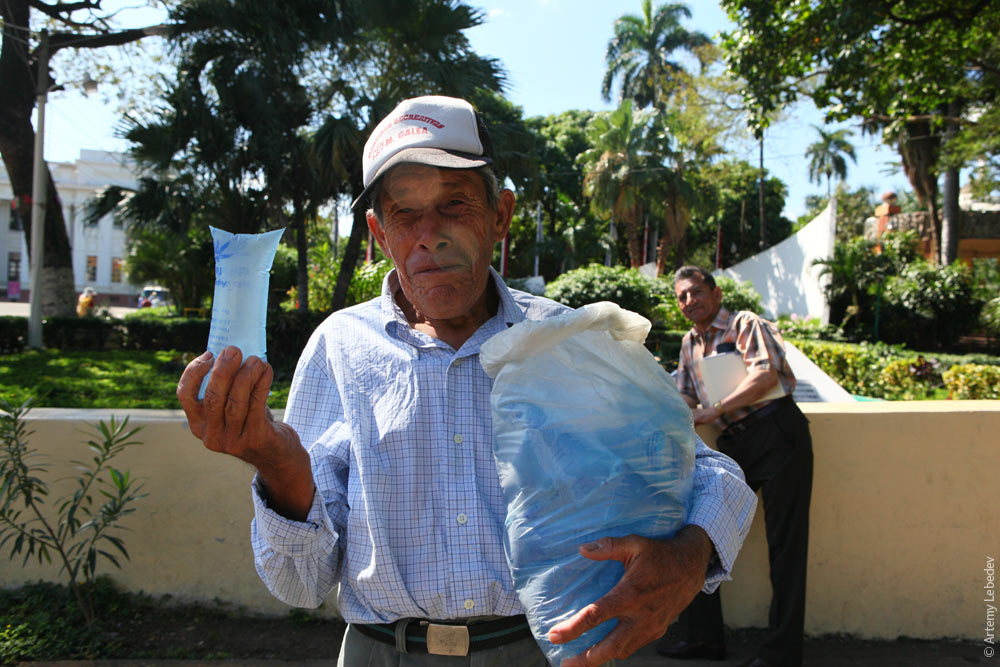 The banner urging people not to litter is as large as the actual trash can. The message’s sponsor is the Russian wireless company Yota, which operates here too (it looks just as strange as Beeline in Vietnam). 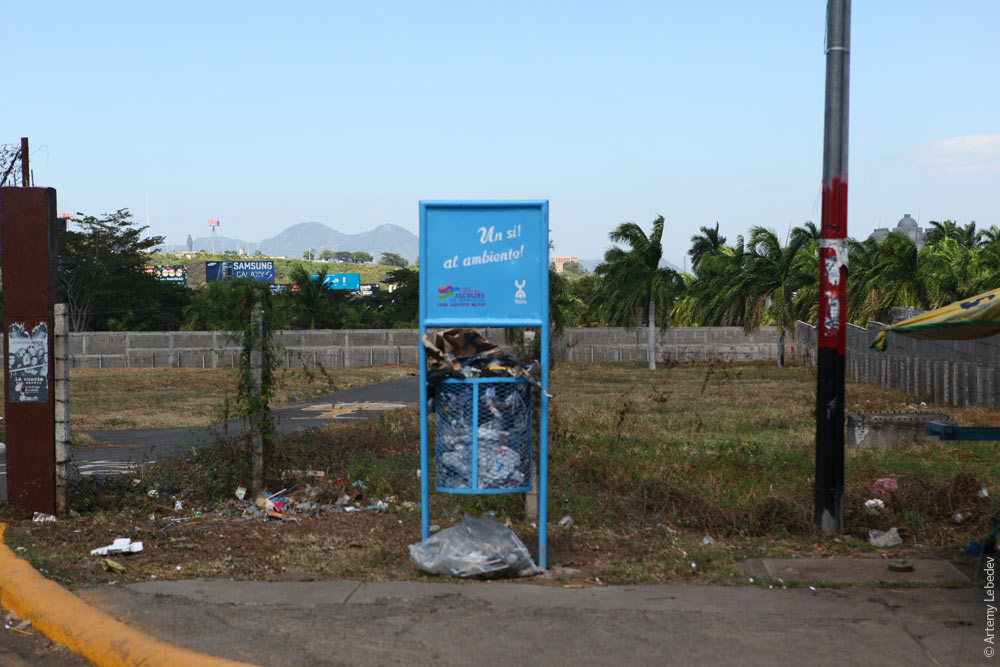 Nicaragua’s main iconic figure is Augusto Sandino, a sort of cross between Lenin and Bolívar. 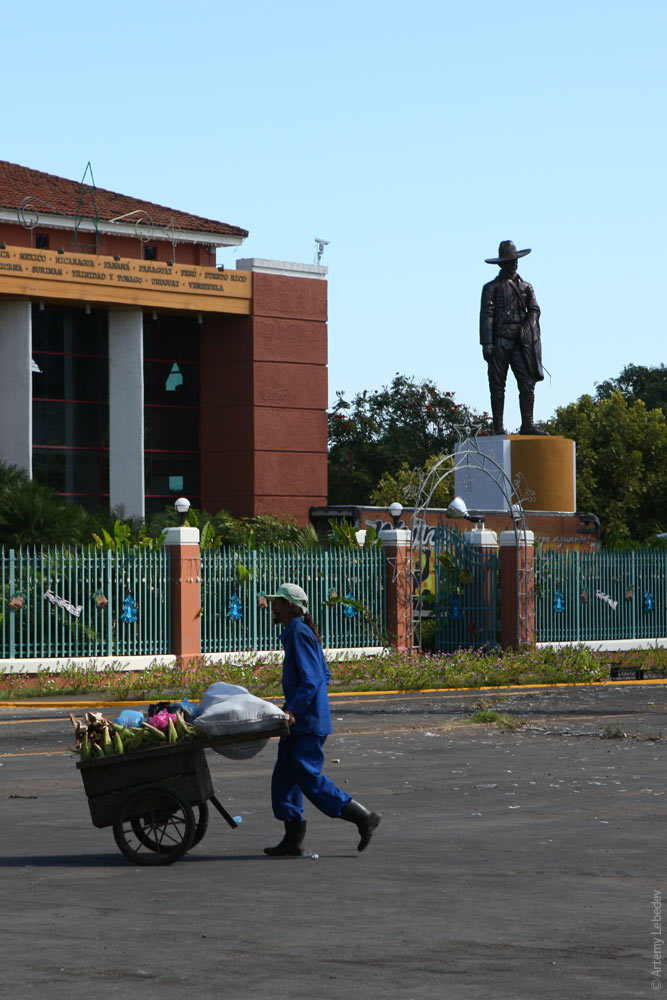 Sandino’s silhouette is everywhere, like the silhouette of the bull in Spain. 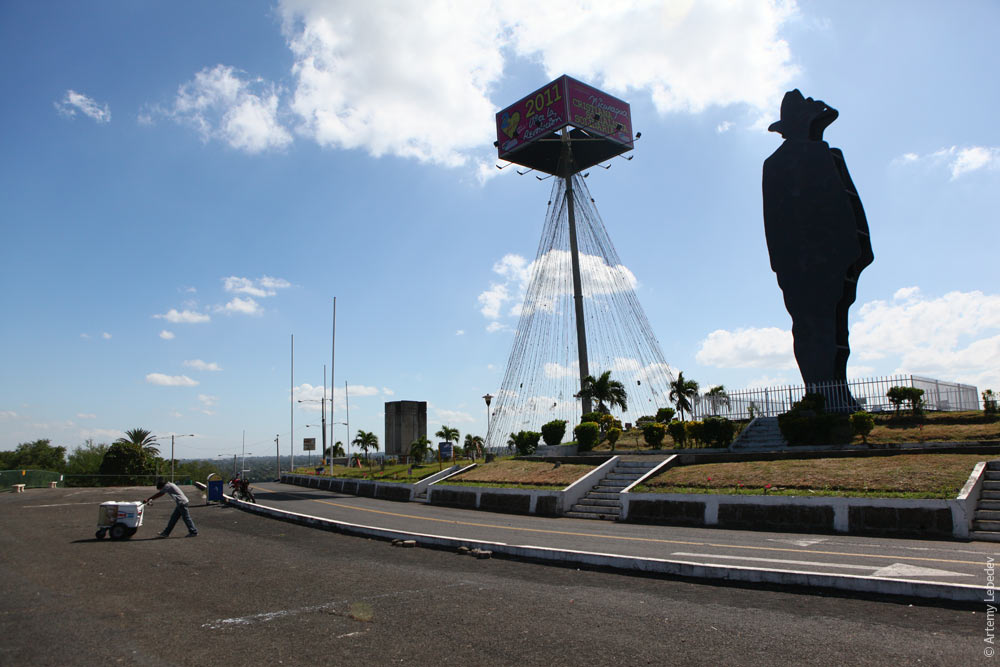 In every square, there’s a giant wire Christmas tree that resembles a pole. Next to the tree, in anticipation of the upcoming elections, is an obligatory billboard promoting the ruling party. 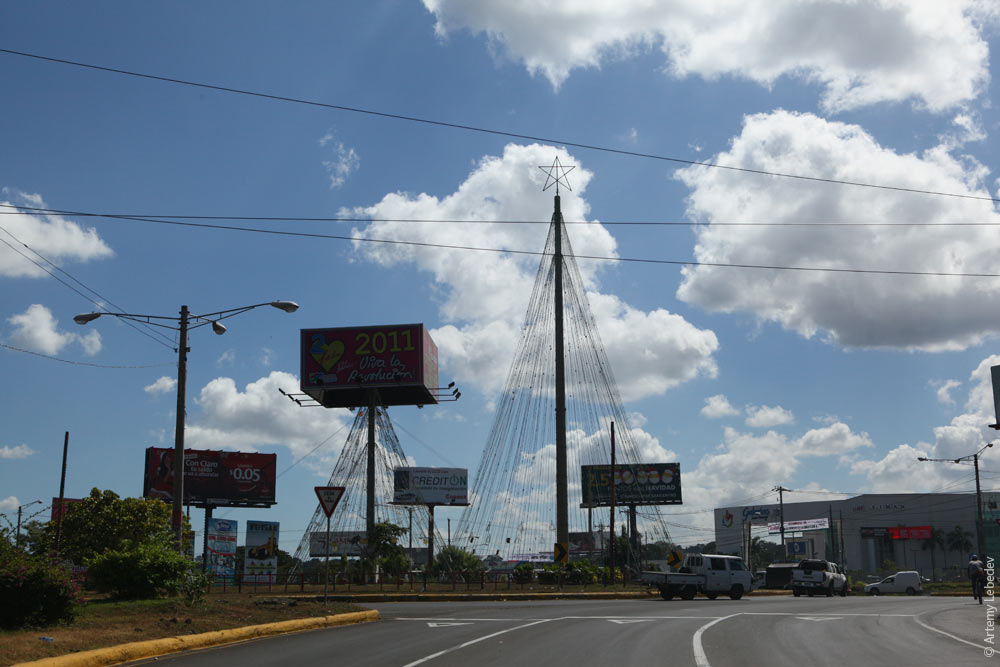 An ultramodern Christian church in what was until recently a completely socialist country. 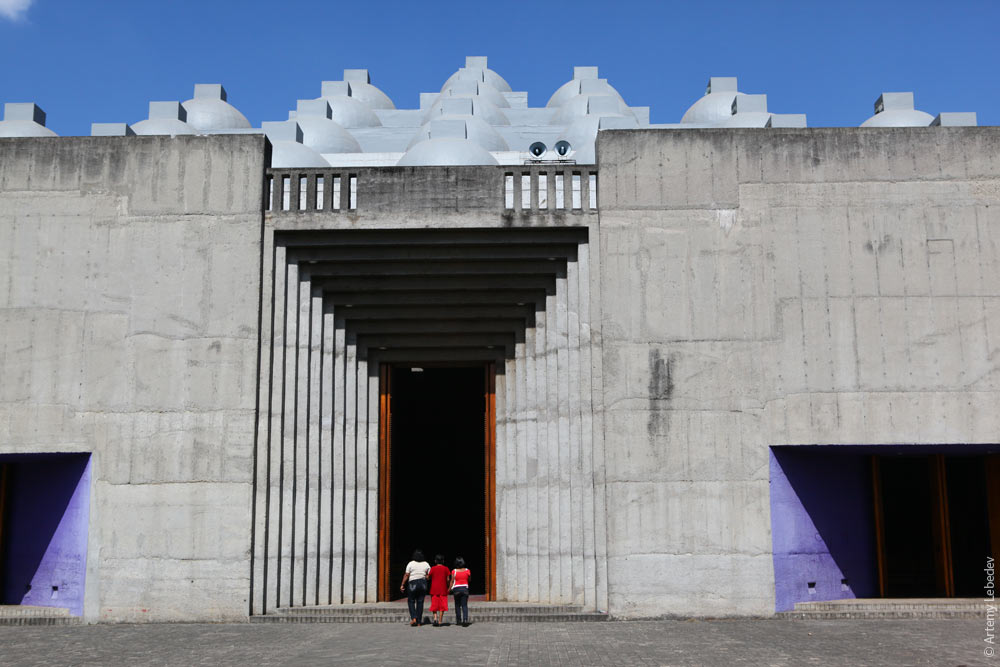 This present-day shift is best illustrated by the below monument to some kind of fallen fighters (in the center with the Kalashnikov) with a traditional Latin American nativity scene set up in front of it. 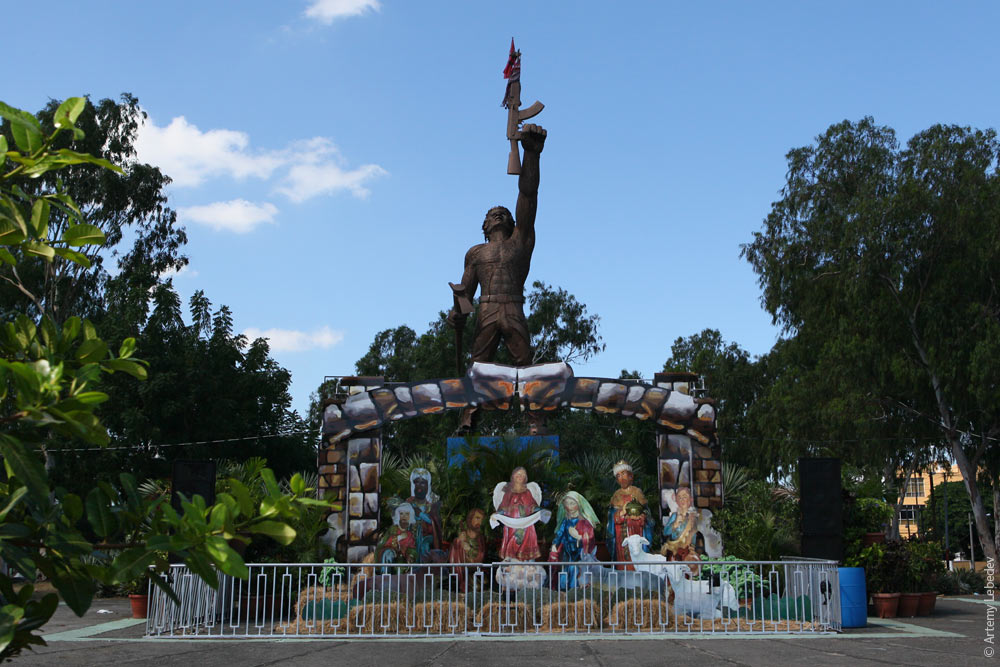 In general, the act of decorating is free of any ideological anguish here. New Year’s is a time to hang up colorful balloons, not contemplate the deep meaning of monuments. 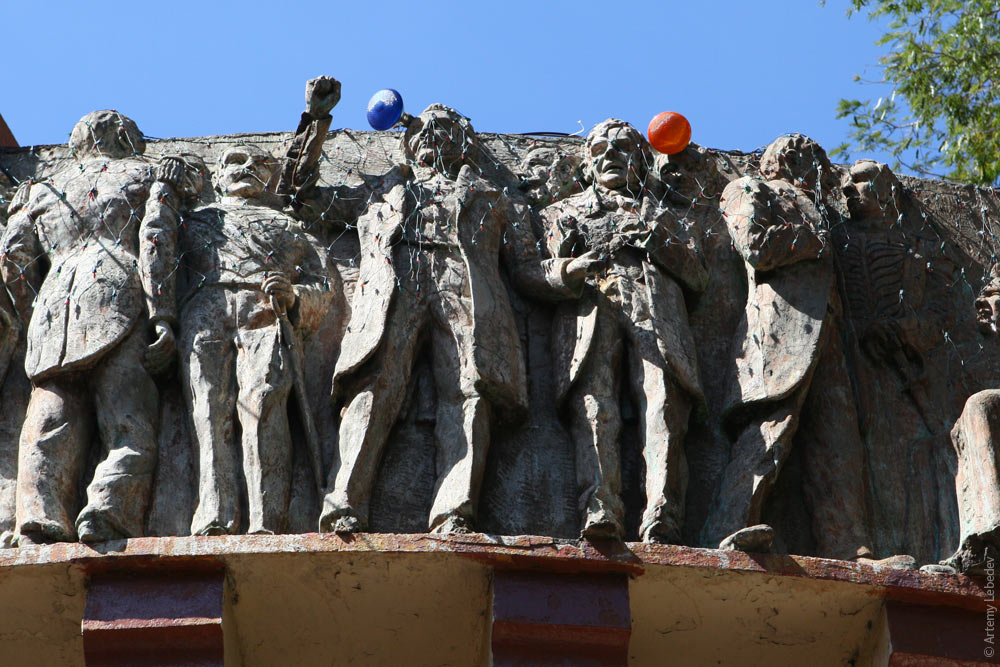 MasayaMapA cozy colonial town.  A hydrant. 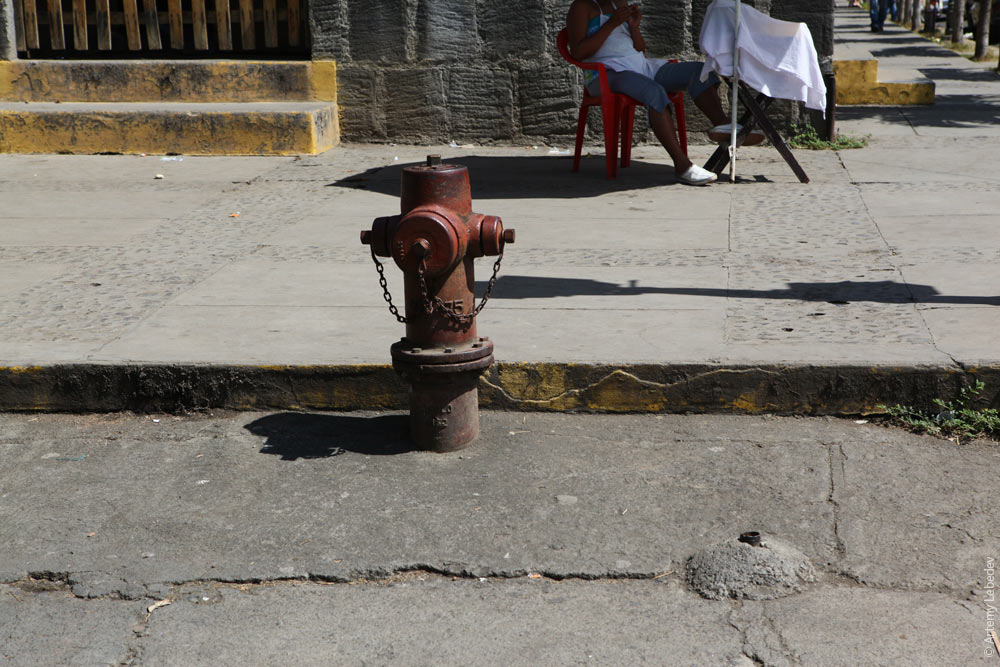 Old fuel barrels find a new use as parts for charcoal grills. 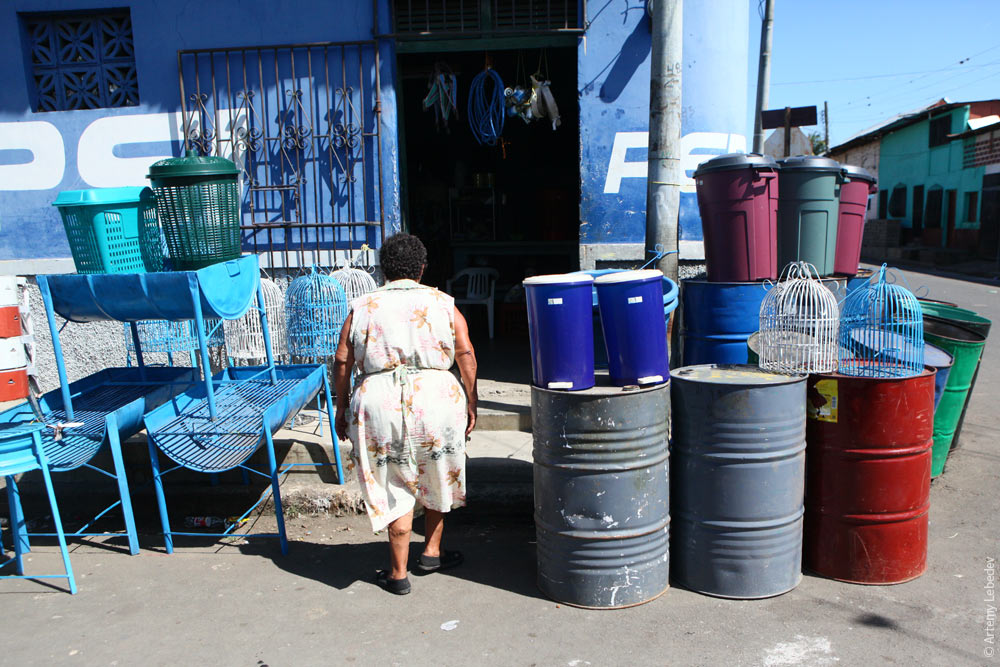 Also, taxidermy statues of copulating frogs are very popular at the local market. 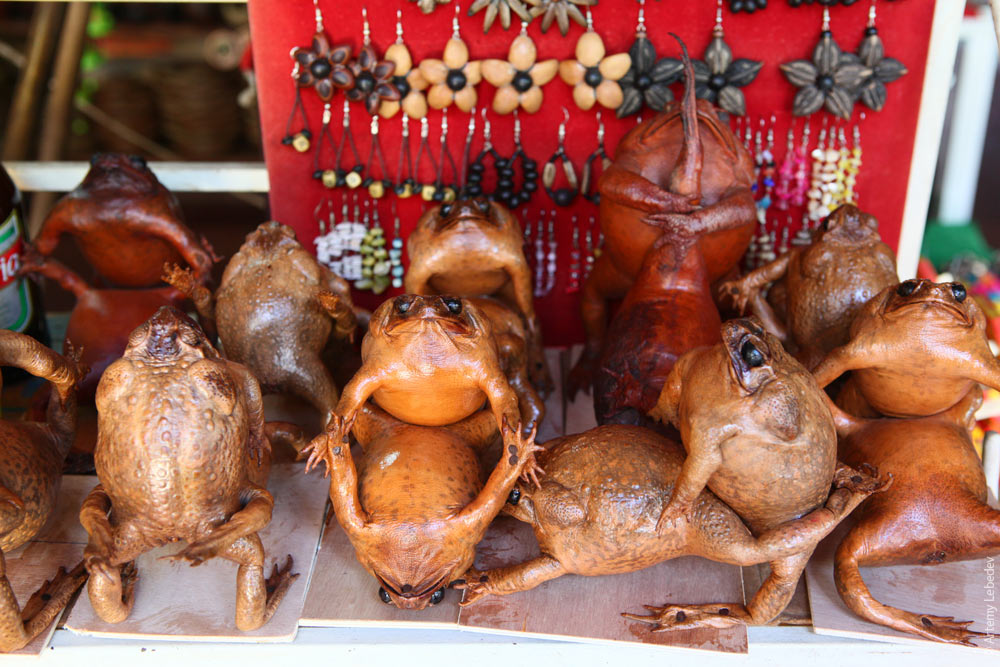 As well as baskets made out of chickens.  GranadaMapThis is the main city that all the tourists are taken to. 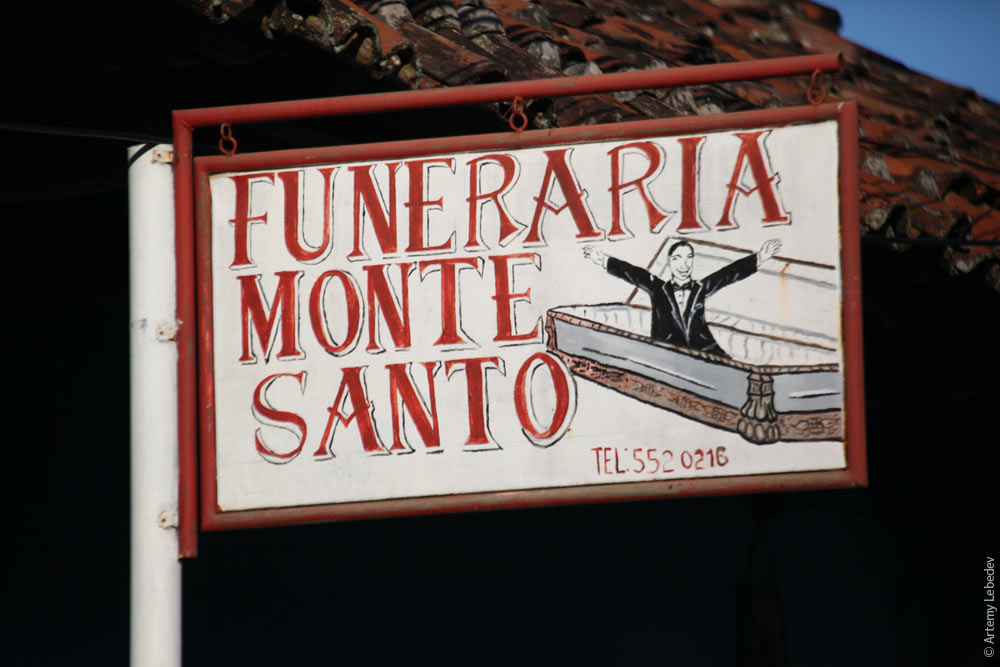 Here, tourists can enjoy themselves and take a break from thinking.  Granada is the world leader in rocking chair consumption. What’s curious is that rocking in the chair is considered inappropriate here and excusable only for small children. 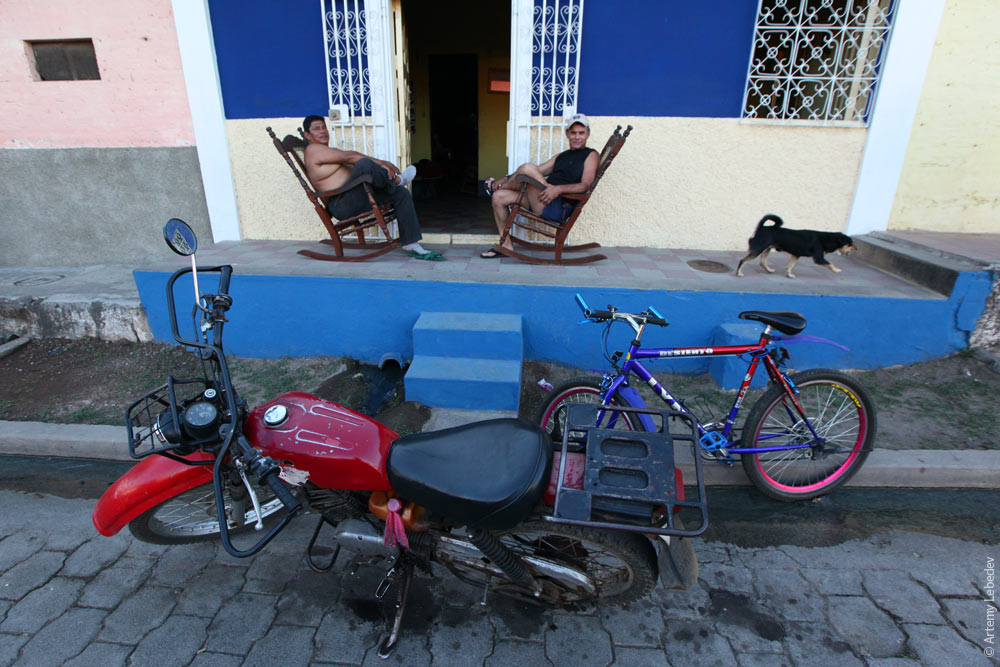 The city is quite charming, although it’s far removed from how the rest of the country lives. 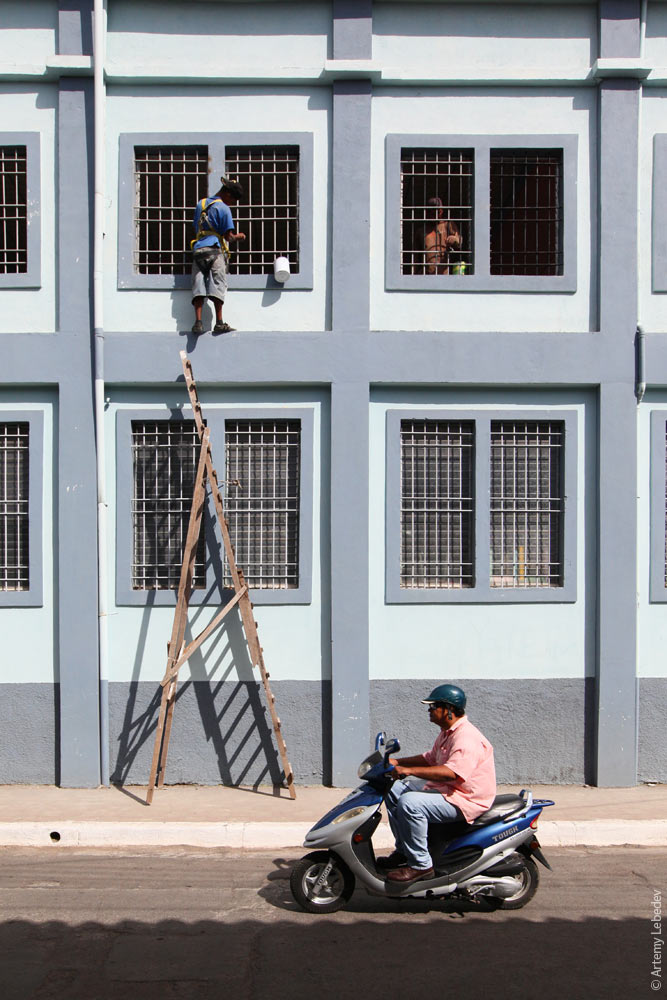 People ride horse-drawn carriages. 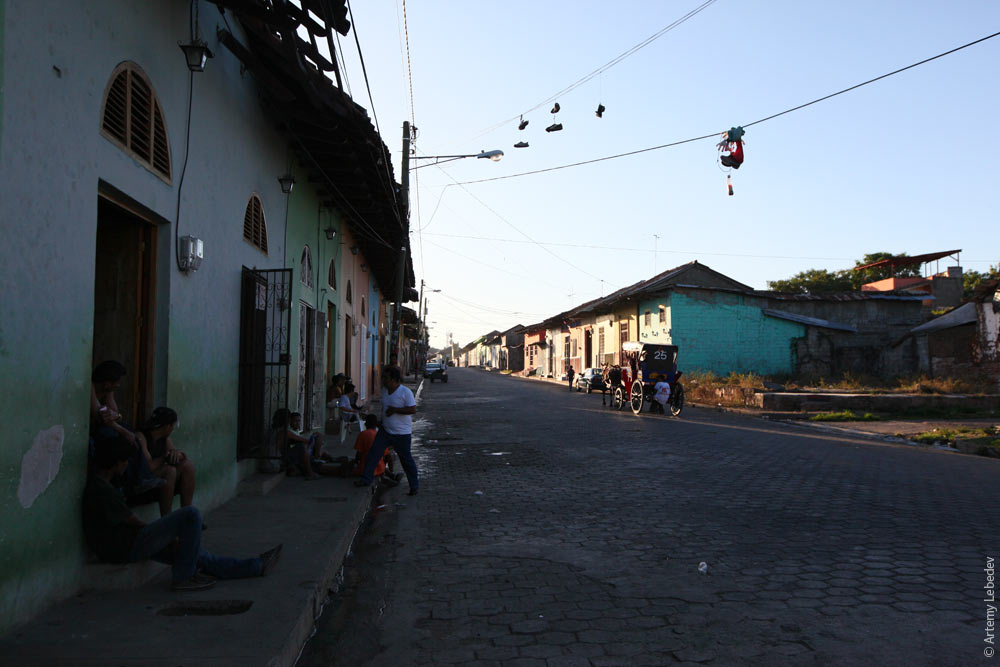 Colonial architecture is preserved with care. 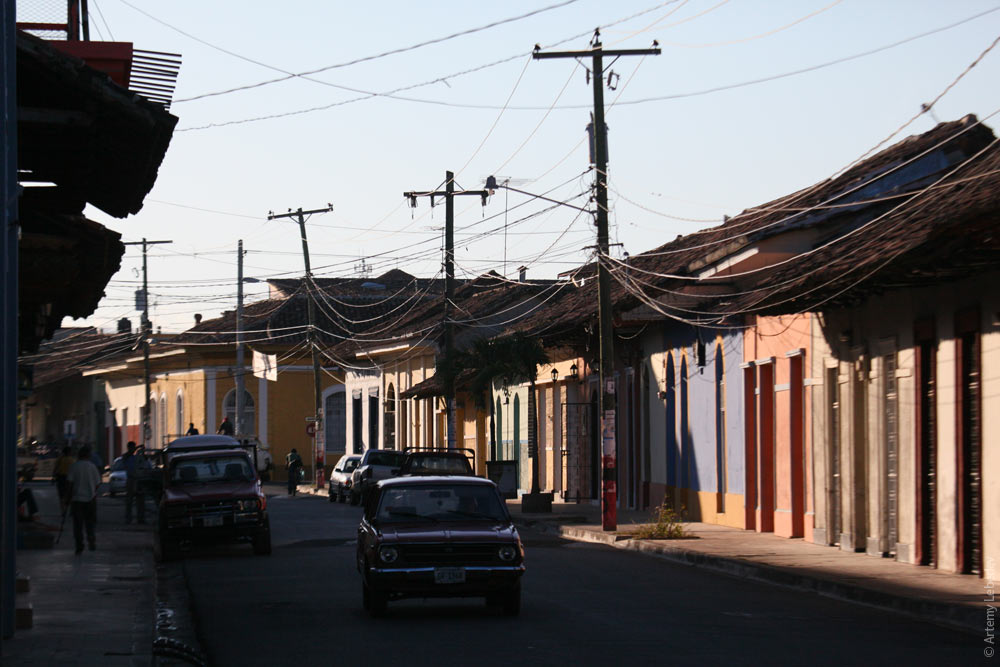 Parrots coo on the tiled roofs. It’s like Arbat Street expanded to the size of a city. 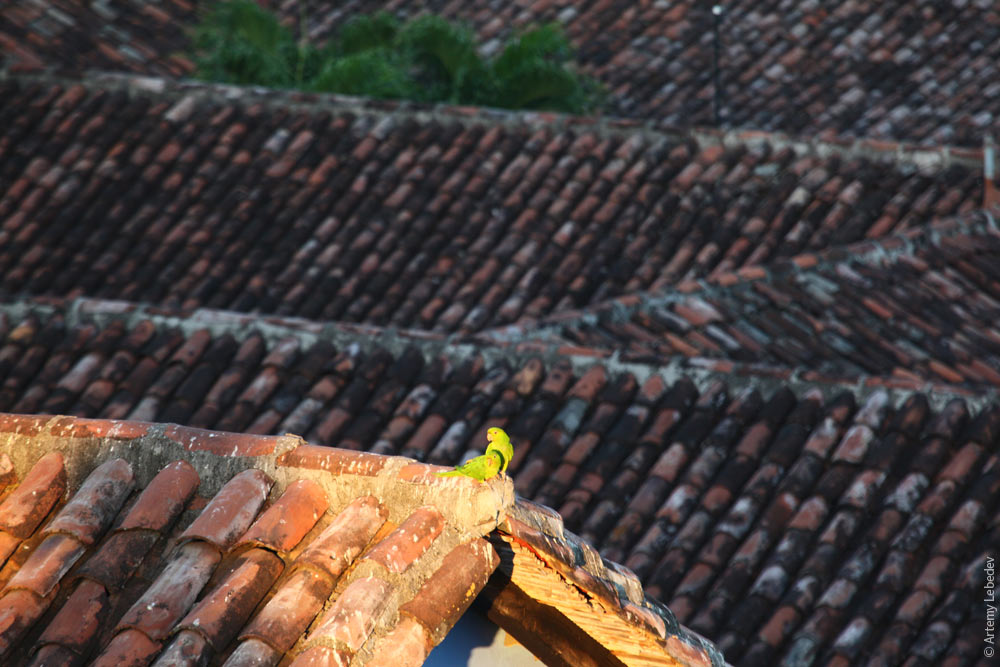 The local grates consist of two parts: the grating itself and a fine mesh behind it.  A payphone. 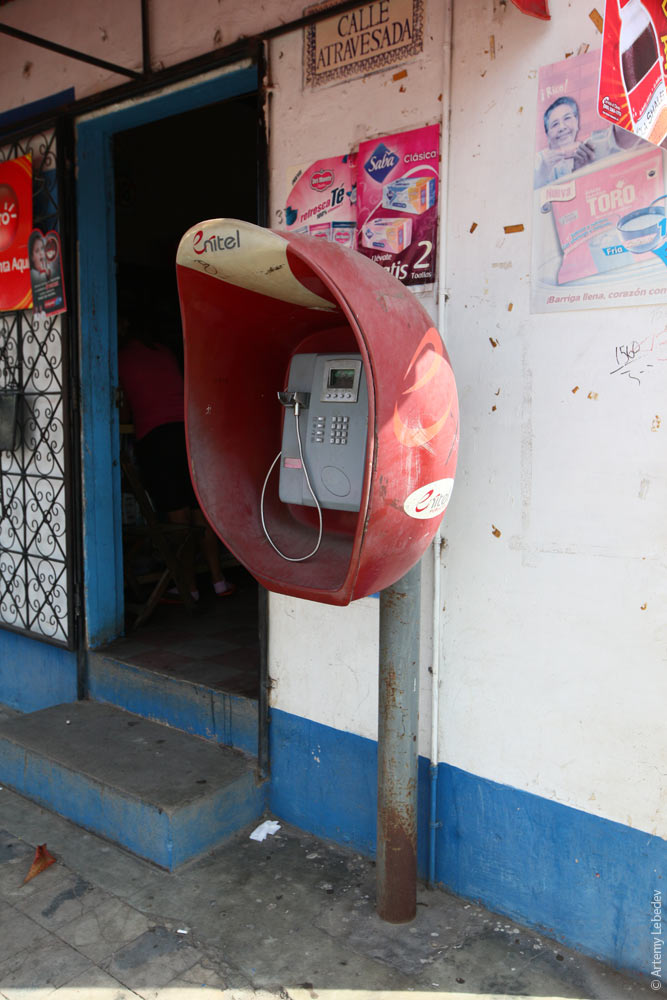 A trash can. 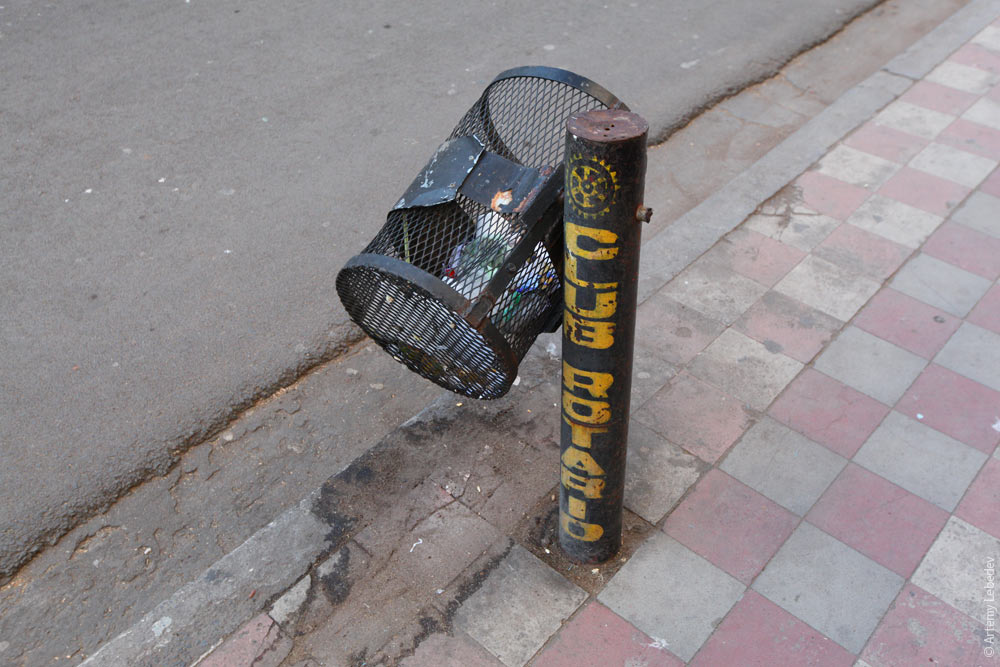 Traces of a recent friendship. 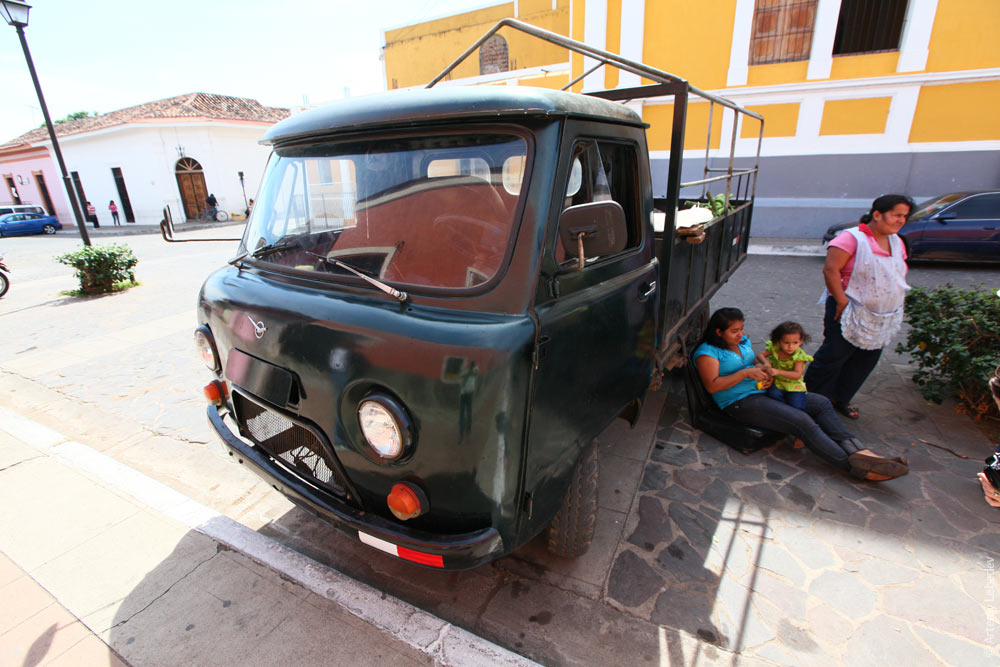 A boy and his toilet. 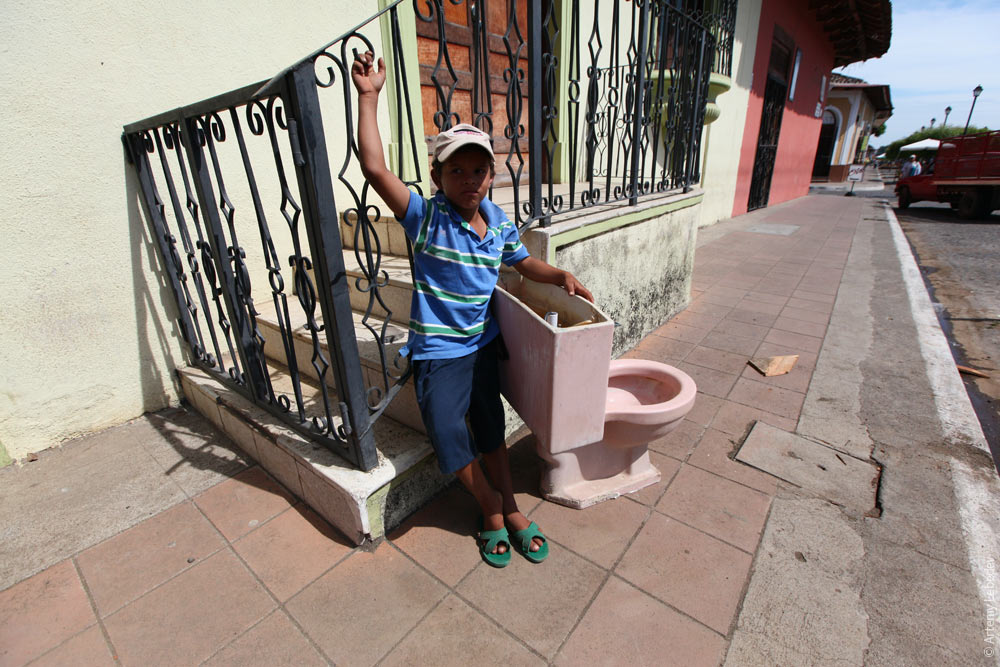 A DVD salesman. 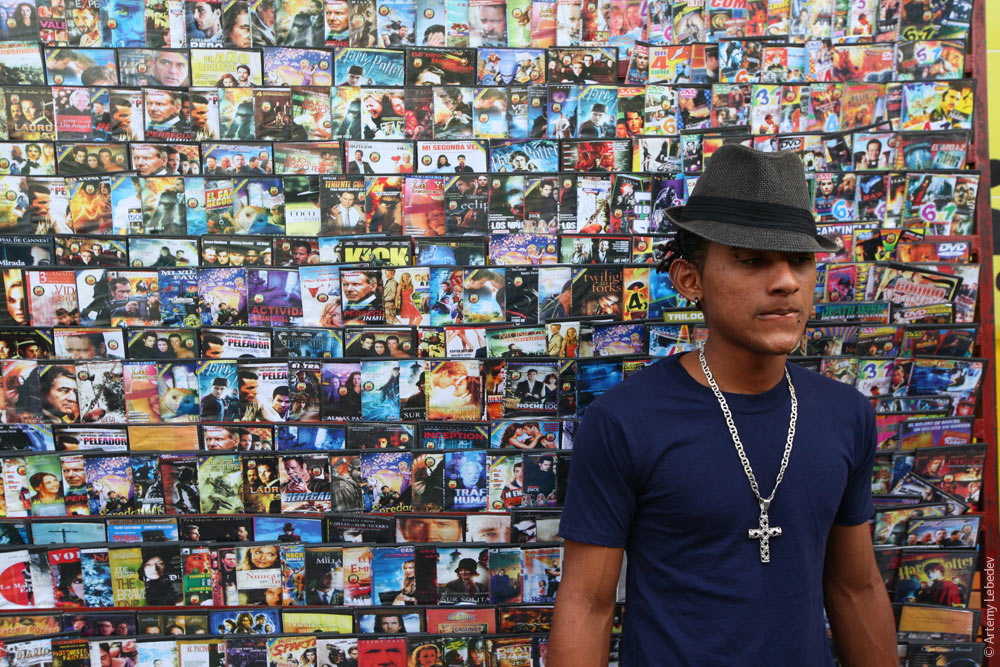 Movie salesmen watching movies. 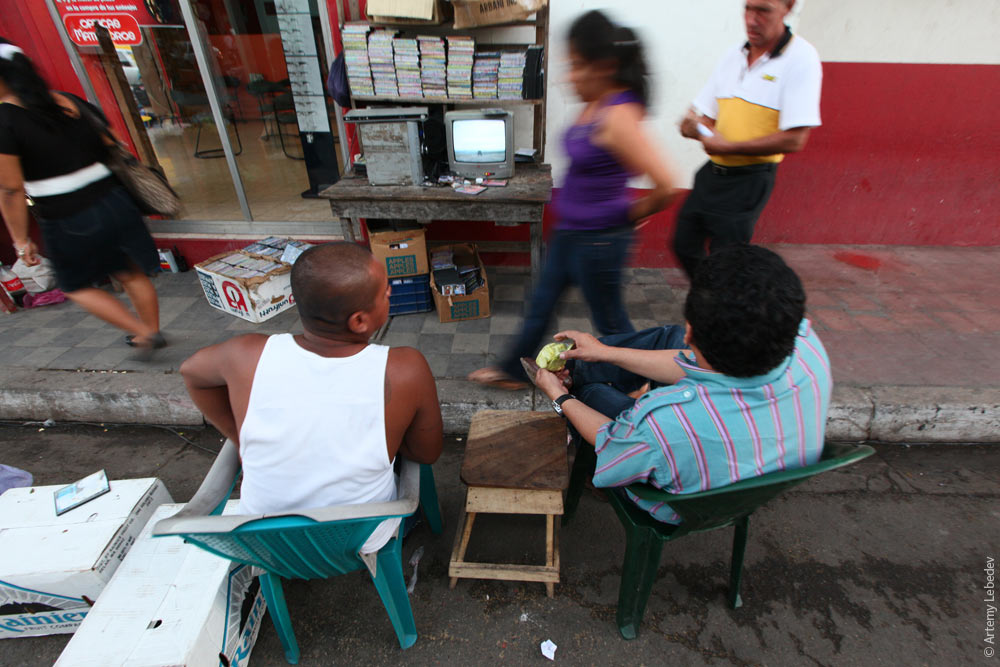 A post office. You can buy a stamp the size of your hand here, perfect for covering the entire back of the postcard. 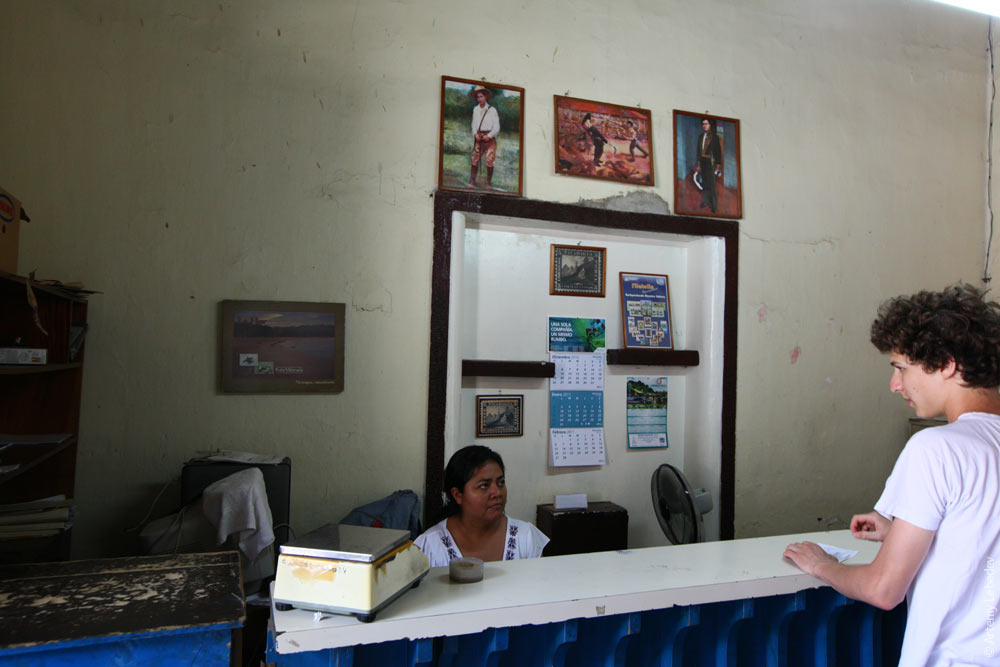 Car garages are built right into the row of buildings, they’re easy to identify by the concrete or flip-down ramps out front. 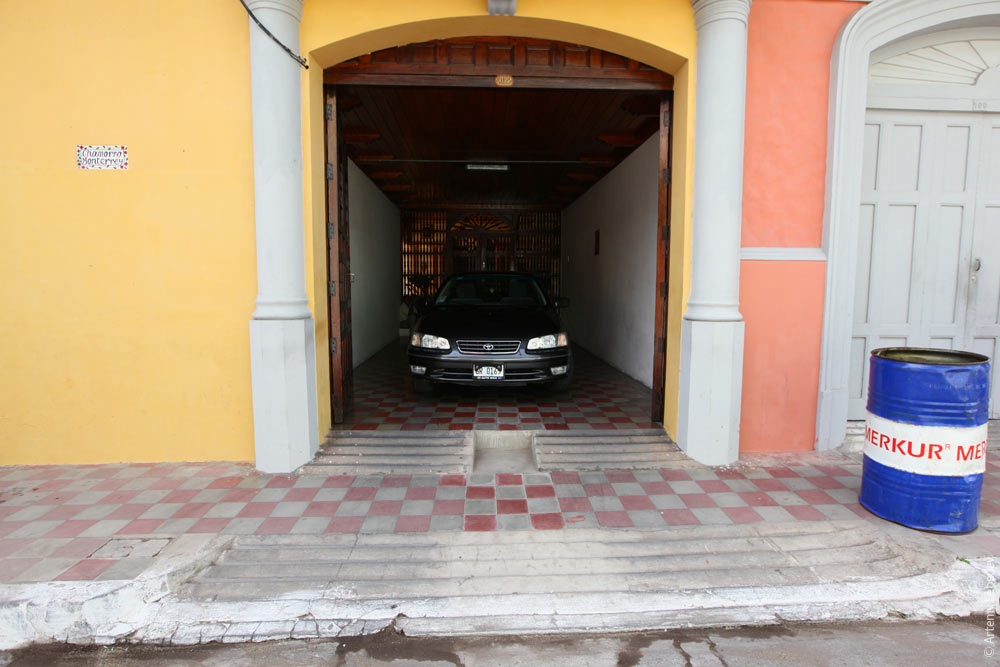 One thing that strikes the eye in Granada is the absence of sidewalks on many of the streets. The sidewalk can easily turn into a private porch, or just get cut off by someone’s front steps. 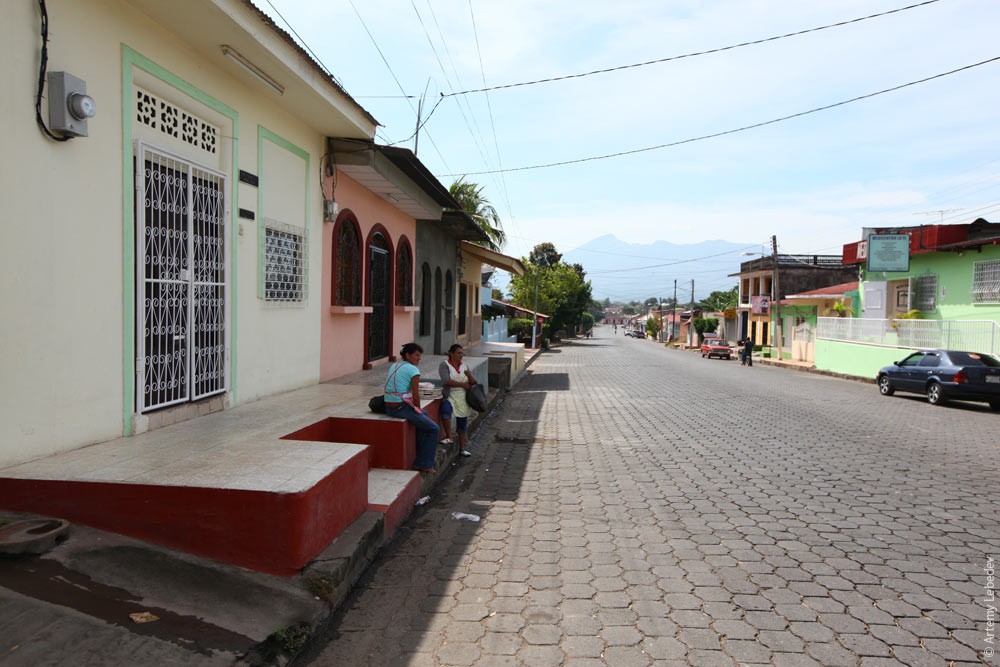 The peaceful atmosphere here is comparable to Antigua Guatemala. Yet the country as a whole suffers from extreme poverty and unbelievable bureaucratic tyranny. 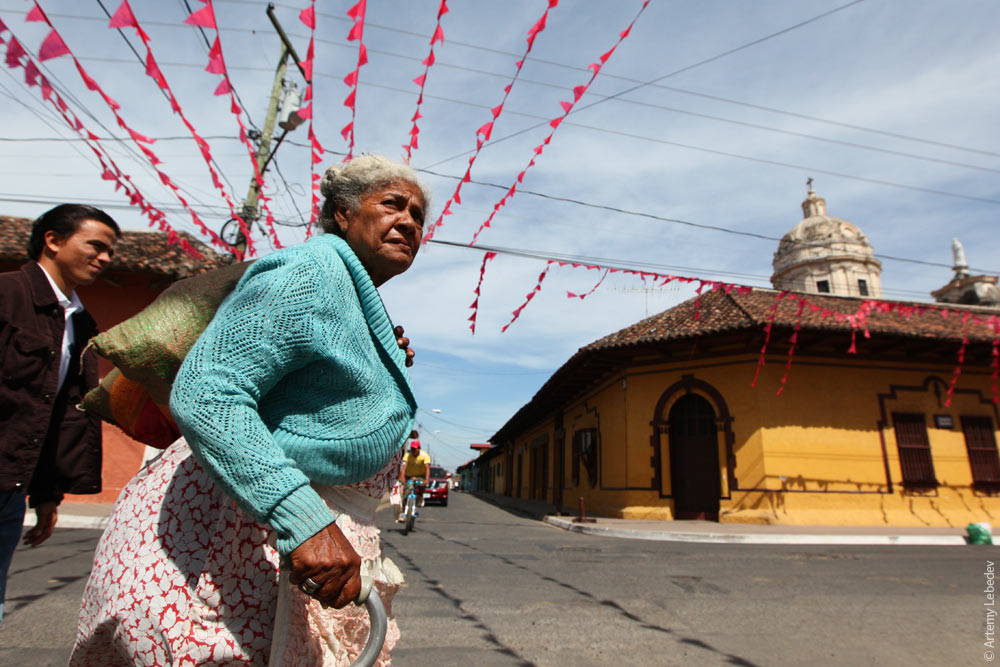 |